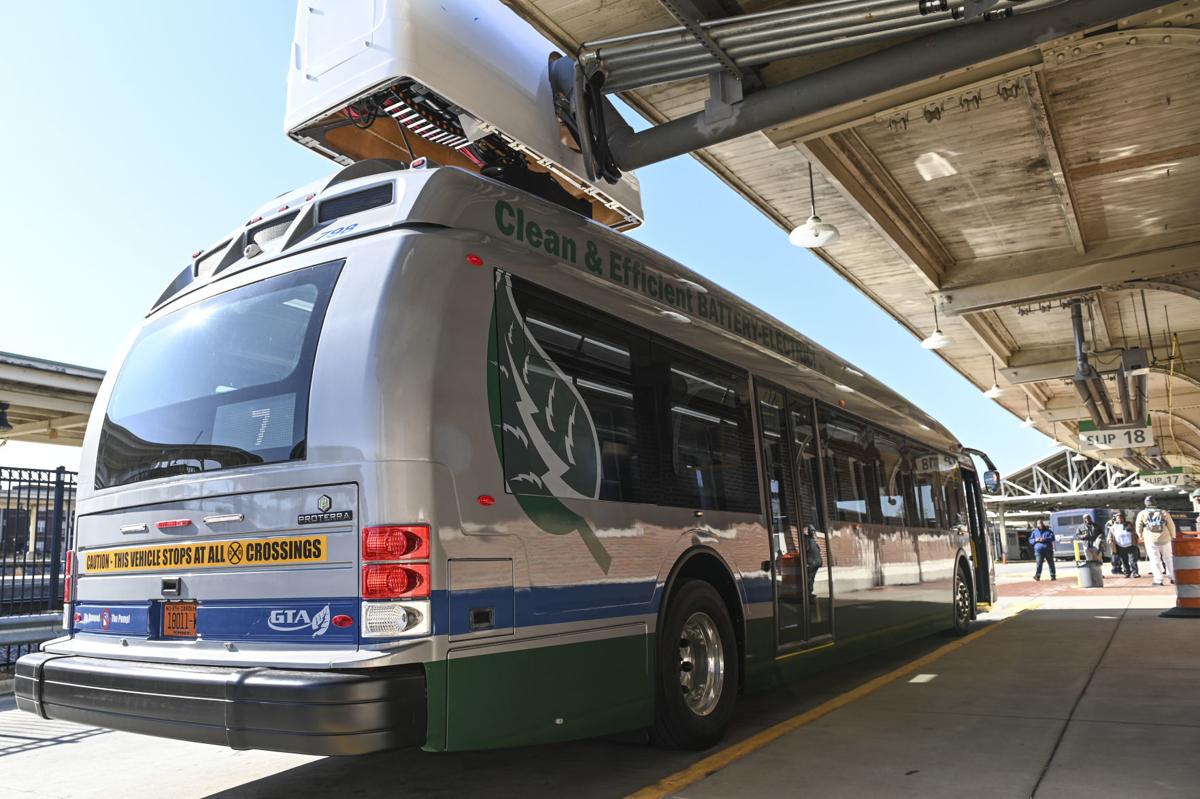
Greensboro, North Carolina, is a vibrant city with a rich history and a thriving economy. Its transportation and infrastructure play a crucial role in supporting the city's growth and connectivity. From its well-maintained roadways to its efficient public transportation system, Greensboro offers a diverse range of options for residents and visitors to navigate the city and beyond. In this article, we'll delve into eight fascinating facts about transportation and infrastructure in Greensboro, shedding light on the city's commitment to sustainable development, accessibility, and innovation. Whether you're a local looking to explore the city's hidden gems or a traveler planning a visit, understanding the transportation landscape of Greensboro will undoubtedly enhance your experience and appreciation for this dynamic urban center. So, let's embark on a journey through the corridors of Greensboro's transportation and infrastructure, uncovering intriguing insights along the way.
Key Takeaways:
- Greensboro’s transportation system includes buses, major highways, and an airport, making it easy for people to get around the city and travel to other places.
- The city is also focused on eco-friendly transportation options, like biking and walking trails, and is committed to providing inclusive services for people with disabilities.
The Greensboro Transit Authority (GTA) operates the city's public transportation system.
The Greensboro Transit Authority (GTA) plays a pivotal role in providing accessible and reliable public transportation throughout Greensboro. With a focus on enhancing mobility and connectivity, GTA offers bus services that cater to the diverse needs of the city's residents and visitors.
Greensboro is intersected by three major interstate highways: I-40, I-85, and I-73.
Greensboro's strategic location is underscored by the convergence of three major interstate highways, namely I-40, I-85, and I-This intersection not only facilitates efficient travel within the city but also serves as a vital link in the broader regional and national transportation network.
The Piedmont Triad International Airport serves as a key transportation hub for the region.
Piedmont Triad International Airport stands as a crucial gateway for air travel in the Greensboro region, offering a range of domestic and international flight options. As a pivotal transportation hub, the airport contributes significantly to the city's connectivity and economic vitality.
Greensboro boasts an extensive network of biking and walking trails.
The city of Greensboro takes pride in its extensive network of biking and walking trails, providing residents and visitors with alternative and eco-friendly transportation options. These trails not only promote physical activity and wellness but also contribute to reducing traffic congestion and environmental impact.
The Greensboro Urban Loop, also known as the Urban Outer Loop, is a major infrastructure project aimed at improving transportation efficiency.
The Greensboro Urban Loop, a significant infrastructure undertaking, is designed to enhance transportation efficiency and alleviate traffic congestion in key areas of the city. This project reflects Greensboro's commitment to advancing its transportation infrastructure to meet the evolving needs of its growing population.
The Greensboro Railway Yard is a vital component of the city's freight transportation network.
The Greensboro Railway Yard serves as a critical hub for freight transportation, facilitating the movement of goods and materials essential to the city's economy. This railway yard plays a pivotal role in supporting Greensboro's industrial and commercial sectors through efficient freight logistics.
Greensboro's public transportation system includes paratransit services for individuals with disabilities.
In line with its commitment to inclusivity, the Greensboro Transit Authority provides paratransit services tailored to meet the transportation needs of individuals with disabilities. This essential service ensures that all members of the community have access to reliable and accommodating transportation options.
The city is actively investing in sustainable transportation initiatives.
Greensboro is dedicated to fostering sustainable transportation solutions, with ongoing investments in initiatives such as electric buses, bike-sharing programs, and infrastructure enhancements. These efforts underscore the city's commitment to reducing environmental impact and promoting eco-conscious transportation alternatives.
By highlighting these 8 facts about transportation and infrastructure in Greensboro, North Carolina, it becomes evident that the city is dedicated to fostering a comprehensive and efficient transportation ecosystem that caters to the diverse needs of its residents and visitors. From public transit and major highways to sustainable initiatives and inclusive services, Greensboro's transportation landscape reflects a forward-looking approach to connectivity and mobility.
Conclusion
In conclusion, Greensboro, North Carolina, boasts a robust transportation and infrastructure system that plays a pivotal role in the city's connectivity and economic vitality. From its well-maintained road network and public transit options to its forward-thinking approach to sustainable transportation, Greensboro continues to prioritize the enhancement of its infrastructure to meet the evolving needs of its residents and businesses. As the city continues to grow and thrive, its commitment to modernizing transportation and infrastructure will undoubtedly contribute to a more sustainable and prosperous future for Greensboro and its inhabitants.
FAQs
What are the main modes of public transportation in Greensboro?In Greensboro, the primary modes of public transportation include buses operated by the Greensboro Transit Authority (GTA) and the Higher Education Area Transit (HEAT) system, which serves several colleges and universities in the area.
How is Greensboro addressing sustainable transportation initiatives?Greensboro is actively promoting sustainable transportation through initiatives such as bike-sharing programs, pedestrian-friendly infrastructure, and the integration of electric buses into its public transit fleet. These efforts align with the city's commitment to reducing carbon emissions and promoting eco-friendly transportation options.
Was this page helpful?
Our commitment to delivering trustworthy and engaging content is at the heart of what we do. Each fact on our site is contributed by real users like you, bringing a wealth of diverse insights and information. To ensure the highest standards of accuracy and reliability, our dedicated editors meticulously review each submission. This process guarantees that the facts we share are not only fascinating but also credible. Trust in our commitment to quality and authenticity as you explore and learn with us.
